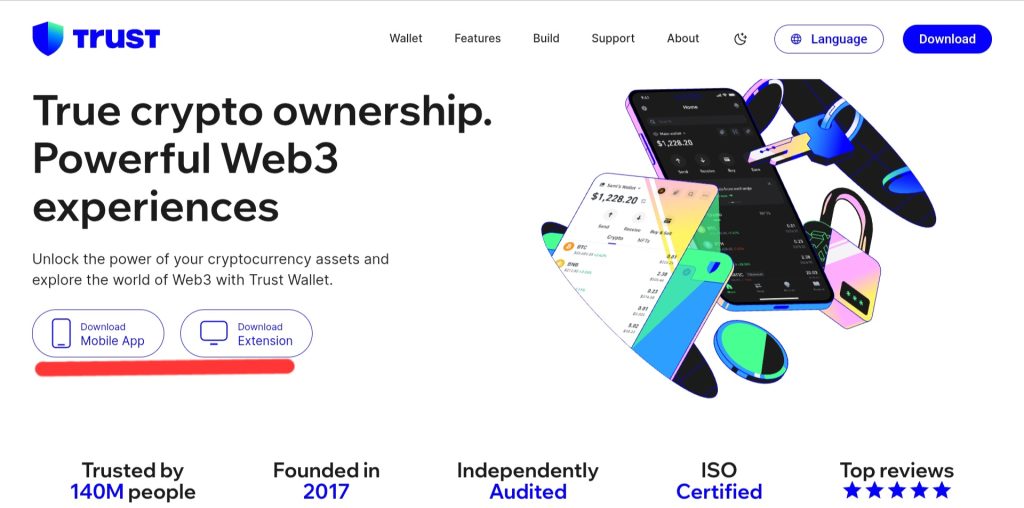Why Choosing the Best Crypto Wallet Matters
The global cryptocurrency market is expected to reach USD 11.71 billion by 2030 (source: Grand View Research – Cryptocurrency Market). As crypto adoption grows, securing digital assets is more critical than ever. With various wallet types available, how do you choose the best option? This guide breaks down the differences between hot vs. cold wallets and custodial vs. non-custodial wallets to help you make an informed decision.
1. What Is a Crypto Wallet?
A cryptocurrency wallet stores private keys that grant access to digital assets. Unlike traditional wallets, crypto wallets don’t hold the actual currency; instead, they secure the credentials that allow transactions on the blockchain.
🔹 Types of Crypto Wallets
There are two main categories of crypto wallets:
- Hot Wallets (connected to the internet)
- Cold Wallets (offline storage)
Each category includes custodial and non-custodial options, which affect security, control, and usability.
2. Hot Wallets: Pros, Cons & Use Cases
🔥 What Are Hot Wallets?
Hot wallets are digital wallets connected to the internet, making them convenient for frequent transactions but more vulnerable to hacking.
✅ Pros of Hot Wallets
- Easy access for trading & transactions
- Free to use and set up
- Supports multiple cryptocurrencies
❌ Cons of Hot Wallets
- Higher risk of cyberattacks
- Private keys are often stored online
- Exchange-based wallets can be frozen or hacked
🔹 Best Hot Wallets (2024)
Wallet | Type | Security Features | Best For |
Trust Wallet | Non-Custodial | Private keys stored locally | Mobile users & DeFi |
MetaMask | Non-Custodial | Browser extension, supports Ethereum | Web3 & DeFi apps |
Exodus | Non-Custodial | Multi-currency support, sleek UI | Beginners |
3. Cold Wallets: Pros, Cons & Use Cases
❄️ What Are Cold Wallets?
Cold wallets store private keys offline, offering the highest security for long-term storage.
✅ Pros of Cold Wallets
- Immune to online hacking attempts
- Ideal for large crypto holdings
- Supports multi-signature security
❌ Cons of Cold Wallets
- Less convenient for frequent transactions
- Higher upfront cost
- Requires careful handling (loss of private keys = loss of funds)
🔹 Best Cold Wallets (2024)
Wallet | Type | Security Features | Best For |
Ledger Nano X | Hardware | PIN & seed phrase protection | Login-term investors |
Trezor Model T | Hardware | Open-source firmware, passphrase | Advanced users |
Ellipal Titan | Air-Gapped | QR code transcations only | High security needs |
4. Custodial vs. Non-Custodial Wallets
Feature | Custodial Wallet | Non-Custodial Wallet |
Who hold private keys? | Third-party (exchange) | User |
Security | Dependent on provider | Full user control |
Risk | Account freeze, hacking | Loss of keys = funds lost |
Ideal for | Beginners, traders | Privacy-foucsed users |
🔹 Examples of Custodial Wallets: Binance, Coinbase
🔹 Examples of Non-Custodial Wallets: Trust Wallet, Ledger Nano X
5. Setting Up Your Crypto Wallet (Trust Wallet Example)

✅ How to Set Up Trust Wallet (Step-by-Step)
- Download Trust Wallet from official site (avoid phishing links).
- Create a new wallet and save the 12-word seed phrase securely.
- Enable biometric login for extra security.
- Receive crypto: Tap “Receive” → Select asset → Copy wallet address.
- Send crypto: Tap “Send” → Enter recipient address → Confirm transaction.
6. How to Choose the Best Crypto Wallet
🔹 Key Factors to Consider
- Security: Cold wallets for large holdings; hot wallets for small, frequent transactions.
- Control: Non-custodial wallets offer full ownership; custodial wallets provide convenience.
- Use Case: Traders may prefer exchange wallets; long-term holders should use hardware wallets.
- Multi-Currency Support: Some wallets only support specific blockchains (e.g., MetaMask for Ethereum).
7. Avoiding Common Crypto Wallet Mistakes
🚨 Avoid These Common Mistakes:
❌ Using an exchange wallet for long-term storage
❌ Losing your private keys or seed phrase
❌ Downloading fake wallet apps (always verify official sources)
❌ Sending crypto to the wrong network (e.g., ERC-20 vs. BEP-20)
✅ Best Practices for Wallet Security:
🔹 Enable 2FA and use a strong password
🔹 Store seed phrases offline (avoid screenshots)
🔹 Regularly update your wallet software
8. Frequently Asked Questions (FAQ)
❓ Can I have multiple crypto wallets?
Yes, many investors use multiple wallets for different purposes (e.g., Ledger for long-term storage, Trust Wallet for daily transactions).
❓ What happens if I lose my private keys?
If you lose your private keys or seed phrase, you cannot recover your funds. Always store them securely offline.
❓ Are hot wallets safe for large amounts of crypto?
No, hot wallets are more vulnerable to hacking. Store large amounts in a cold wallet for better security.
9. Final Thoughts: Which Crypto Wallet Is Best for You?
Choosing the best crypto wallet depends on your needs:
- For beginners & traders → Trust Wallet (easy-to-use)
- For security-focused users → Ledger Nano X (hardware security)
- For DeFi & Web3 users → MetaMask (browser-based)
🔹 Pro Tip: Use a combination of hot & cold wallets for optimal security & accessibility.
Recommended External Resources
🔹 Trust Wallet Official Site
🔹 Ledger Nano X Official Store
🔹 Kraken Official Store
🔹 How to Start Investing in Cryptocurrency Safely: A Step-by-Step Guide for Beginners







